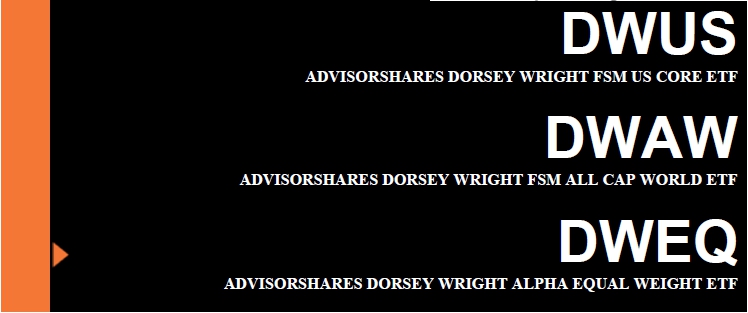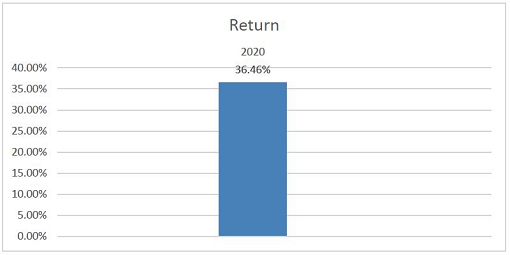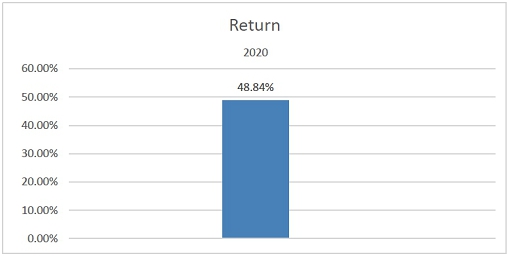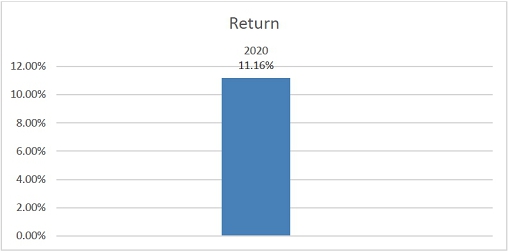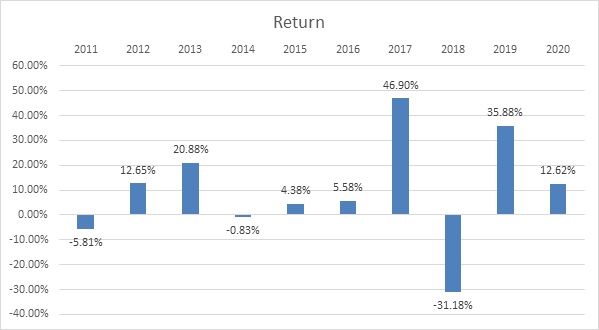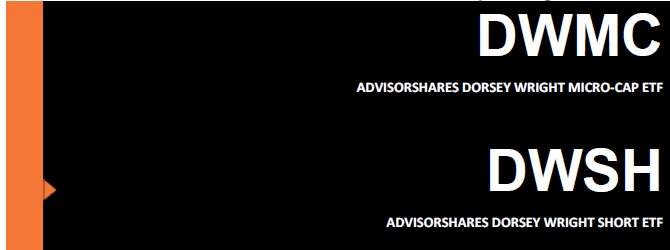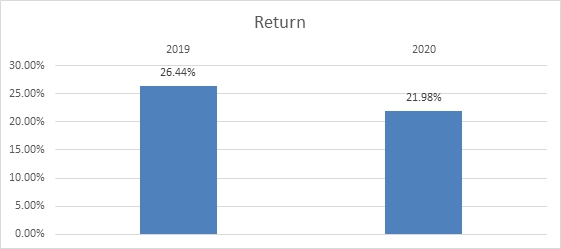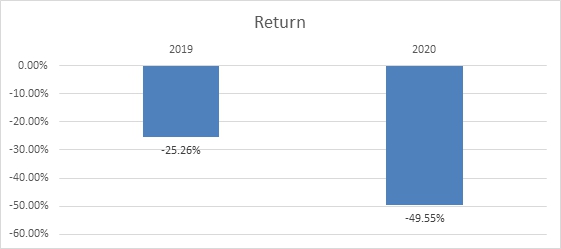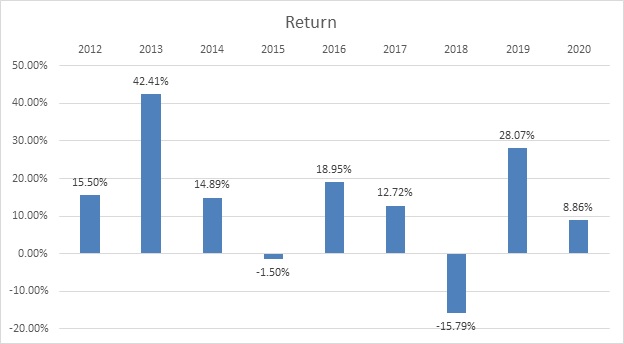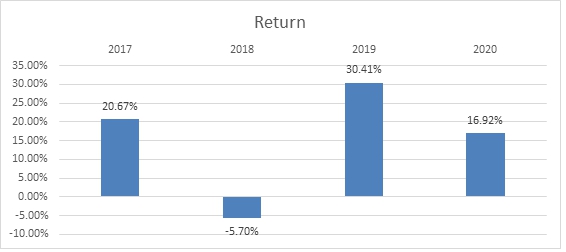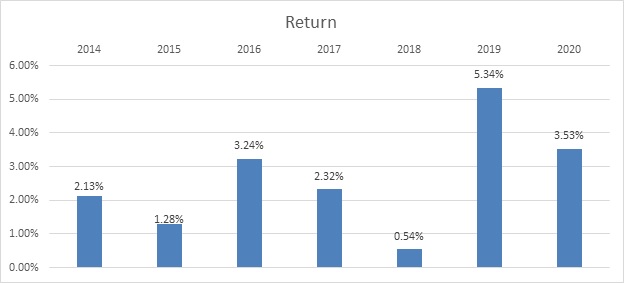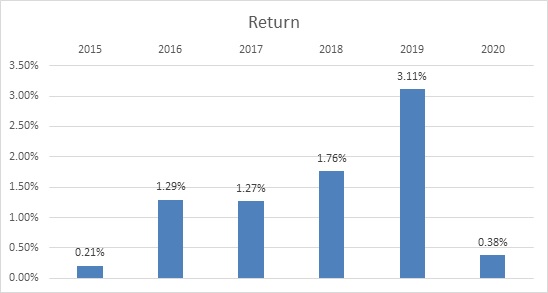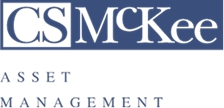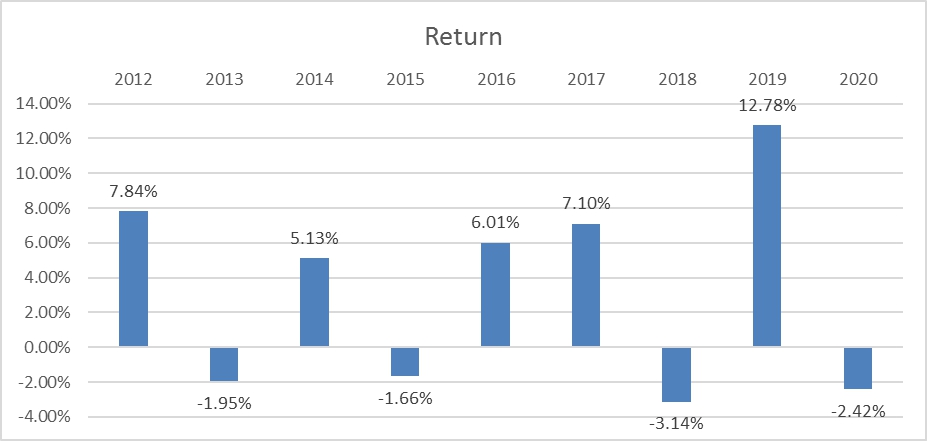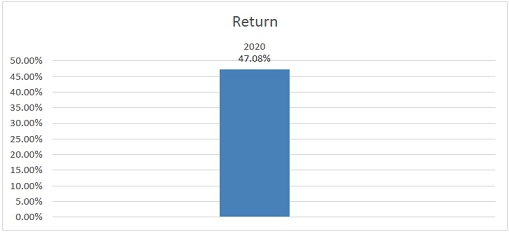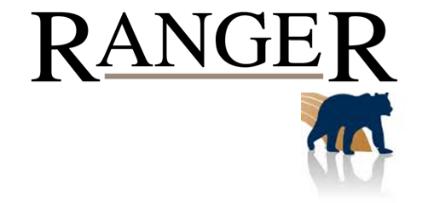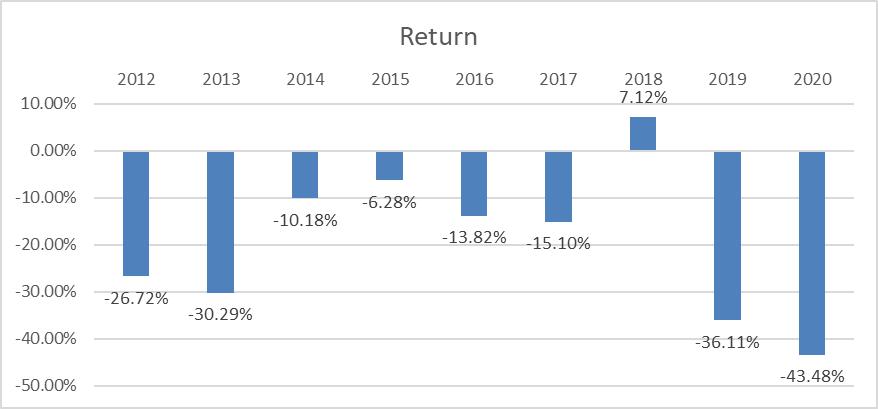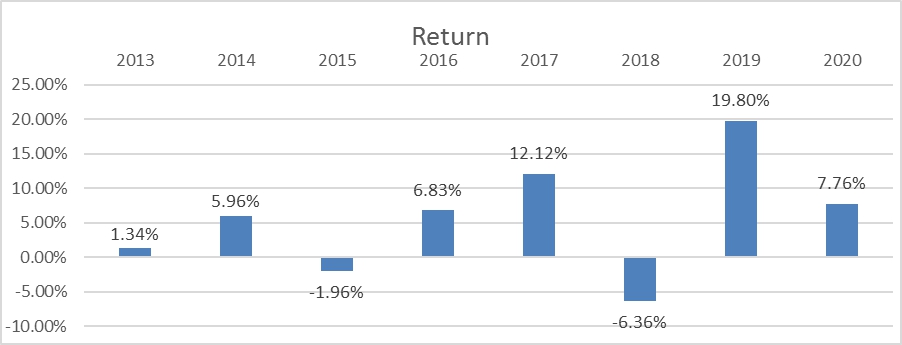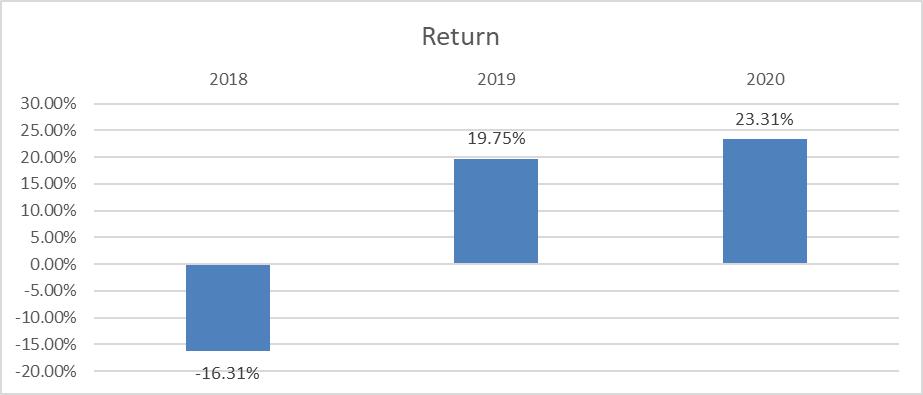|
● |
Investments in Foreign Equity Securities. A Fund may invest in the equity securities of foreign issuers, including the securities of foreign issuers in emerging countries. Emerging or developing markets exist in countries that are considered to be in the initial stages of industrialization. The risks of investing in these markets are similar to the risks of international investing in general, although the risks are greater in emerging and developing markets. Countries with emerging or developing securities markets tend to have economic structures that are less stable than countries with developed securities markets. This is because their economies may be based on only a few industries and their securities markets may trade a small number of securities. Prices on these exchanges tend to be volatile, and securities in these countries historically have offered greater potential for gain (as well as loss) than securities of companies located in developed countries. |
Exchange-Traded Notes (ETNs)
Each Fund may, and the AdvisorShares Ranger Equity Bear ETF and AdvisorShares STAR Global Buy-Write ETF intend to, invest in ETNs. ETNs are senior, unsecured unsubordinated debt securities issued by an underwriting bank that are designed to provide returns that are linked to a particular benchmark less investor fees. ETNs have a maturity date and, generally, are backed only by the creditworthiness of the issuer. As a result, the value of an ETN may be influenced by time to maturity, level of supply and demand for the ETN, volatility and lack of liquidity in the underlying market (
e.g.,
the commodities market), changes in the applicable interest rates, changes in the issuer’s credit rating, and economic, legal, political or geographic events that affect the referenced market. ETNs also may be subject to credit risk.
It is expected that the issuer’s credit rating will be investment-grade at the time of investment, however, the credit rating may be revised or withdrawn at any time and there is no assurance that a credit rating will remain in effect for any given time period. If a rating agency lowers the issuer’s credit rating or there is a decline in the perceived creditworthiness of the issuer, the value of the ETN will decline, as a lower credit rating reflects a greater risk that the issuer will default on its obligation to ETN investors. A Fund must pay an investor fee when investing in an ETN, which will reduce the amount of return on investment at maturity or upon redemption. There may be restrictions on the Fund’s right to redeem its investment in an ETN, which is meant to be held until maturity. There are no periodic interest payments for ETNs, and principal typically is not protected. As is the case with other ETPs, an investor could lose some of or the entire amount invested in ETNs. A Fund’s decision to sell its ETN holdings may be limited by the availability of a secondary market.
Each Fund may invest in fixed income securities. The market value of fixed income investments will change in response to interest rate changes and other factors. During periods of falling interest rates, the values of outstanding fixed income securities generally rise. Conversely, during periods of rising interest rates, the values of such securities generally decline. Moreover, while securities with longer maturities tend to produce higher yields, the prices of longer maturity securities are also subject to greater market fluctuations as a result of changes in interest rates. Changes by recognized agencies in the rating of any fixed income security and in the ability of an issuer to make payments of interest and principal also affect the value of these investments. Changes in the value of these securities will not necessarily affect cash income derived from these securities but will affect an investing Fund’s NAV. Additional information regarding fixed income securities is described below.
|
● |
Duration. Duration is a measure of the expected change in value of a fixed income security for a given change in interest rates. For example, if interest rates changed by one percent, the value of a security having an effective duration of two years generally would vary by two percent. Duration takes the length of the time intervals between the present time and time that the interest and principal payments are scheduled, or in the case of a callable bond, expected to be received, and weighs them by the present values of the cash to be received at each future point in time. |
|
● |
Creditor Liability and Participation on Creditors Committees. Generally, when a fund holds bonds or other similar fixed income securities of an issuer, the fund becomes a creditor of the issuer. If a Fund is a creditor of an issuer it, may be subject to challenges related to the securities that it holds, either in connection with the bankruptcy of the issuer or in connection with another action brought by other creditors of the issuer, shareholders of the issuer or the issuer itself. A Fund may from time to time participate on committees formed by creditors to negotiate with the management of financially troubled issuers of securities held by the Fund. Such participation may subject a Fund to expenses such as legal fees and may make the Fund an “insider” of the issuer for purposes of the federal securities laws, and therefore may restrict the Fund’s ability to trade in or acquire additional positions in a particular security when it might otherwise desire to do so. Participation by a Fund on such committees also may expose the Fund to potential liabilities under the federal bankruptcy laws or other laws governing the rights of creditors and debtors. A Fund will participate on such committees only when its Sub-Advisor believes that such participation is necessary or desirable to enforce the Fund’s rights as a creditor or to protect the value of securities held by the Fund. Further, a Sub-Advisor has the authority to represent the Trust, or its Fund, on creditors committees or similar committees and generally with respect to challenges related to the securities held by the Fund relating to the bankruptcy of an issuer or in connection with another action brought by other creditors of the issuer, shareholders of the issuer or the issuer itself. |
|
● |
Variable and Floating Rate Securities. Variable and floating rate instruments involve certain obligations that may carry variable or floating rates of interest, and may involve a conditional or unconditional demand feature. Such instruments bear interest at rates which are not fixed, but which vary with changes in specified market rates or indices. The interest rates on these securities may be reset daily, weekly, quarterly, or some other reset period, and may have a set floor or ceiling on interest rate changes. There is a risk that the current interest rate on such obligations may not accurately reflect existing market interest rates. A demand instrument with a demand notice exceeding seven days may be considered illiquid if there is no secondary market for such security. |
|
● |
Bank Obligations. Bank obligations may include certificates of deposit, bankers’ acceptances, and fixed time deposits. Certificates of deposit are negotiable certificates issued against funds deposited in a commercial bank for a definite period of time and earning a specified return. Bankers’ acceptances are negotiable drafts or bills of exchange, normally drawn by an importer or exporter to pay for specific merchandise, which are “accepted” by a bank, meaning, in effect, that the bank unconditionally agrees to pay the face value of the instrument on maturity. Fixed time deposits are bank obligations payable at a stated maturity date and bearing interest at a fixed rate. Fixed time deposits may be withdrawn on demand by the investor, but may be subject to early withdrawal penalties which vary depending upon market conditions and the remaining maturity of the obligation. There are no contractual restrictions on the right to transfer a beneficial interest in a fixed time deposit to a third-party, although there is no market for such deposits. A Fund will not invest in fixed time deposits which (1) are not subject to prepayment or (2) provide for withdrawal penalties upon prepayment (other than overnight deposits) if, in the aggregate, more than 15% of its net assets would be invested in such deposits, repurchase agreements with remaining maturities of more than seven days and other illiquid assets. Subject to the Trust’s limitation on concentration, as described in the “Investment Restrictions” section below, there is no limitation on the amount of a Fund’s assets which may be invested in obligations of foreign banks which meet the conditions set forth herein. |
Obligations of foreign banks involve somewhat different investment risks than those affecting obligations of U.S. banks, including the possibilities that their liquidity could be impaired because of future political and economic developments, that their obligations may be less marketable than comparable obligations of U.S. banks, that a foreign jurisdiction might impose withholding taxes on interest income payable on those obligations, that foreign deposits may be seized or nationalized, that foreign governmental restrictions such as exchange controls may be adopted which might adversely affect the payment of principal and interest on those obligations and that the selection of those obligations may be more difficult because there may be less publicly available information concerning foreign banks or the accounting, auditing and financial reporting standards, practices and requirements applicable to foreign banks may differ from those applicable to United States banks. Foreign banks are not generally subject to examination by any United States Government agency or instrumentality.
Debt Securities.
Fixed income securities are debt securities. A debt security is a security consisting of a certificate or other evidence of a debt (secured or unsecured) on which the issuing company or governmental body promises to pay the holder thereof a fixed, variable, or floating rate of interest for a specified length of time, and to repay the debt on the specified maturity date, as discussed above. Some debt securities, such as zero coupon bonds, do not make regular interest payments but are issued at a discount to their principal or maturity value. Debt securities include a variety of fixed income obligations, including, but not limited to, corporate debt securities, government securities, municipal securities, convertible securities, and mortgage-backed securities. Debt securities include investment-grade securities, non-investment-grade securities, and unrated securities. Debt securities are subject to a variety of risks, such as interest rate risk, income risk, call/prepayment risk, inflation risk, credit risk, and currency risk.
|
● |
Corporate Debt Securities. Each Fund and certain of the underlying ETPs may, and the AdvisorShares Newfleet Multi-Sector Income ETF intends to, invest in corporate debt securities representative of one or more high yield bond or credit derivative indices, which may change from time to time. Selection will generally be dependent on independent credit analysis or fundamental analysis performed by the Fund’s Sub-Advisor. A Fund may invest in all grades of corporate debt securities, including below investment-grade securities, as discussed below. See Appendix A for a description of corporate bond ratings. A Fund also may invest in unrated securities. |
Corporate debt securities are typically fixed-income securities issued by businesses to finance their operations. Notes, bonds, debentures and commercial paper are the most common types of corporate debt securities. The primary differences between the different types of corporate debt securities are their maturities and secured or unsecured status. Commercial paper has the shortest term and is usually unsecured. The broad category of corporate debt securities includes debt issued by domestic or foreign companies of all kinds, including those with small-, mid- and large-capitalizations. Corporate debt may be rated investment-grade or below investment-grade and may carry variable or floating rates of interest.
Because of the wide range of types, and maturities, of corporate debt securities, as well as the range of creditworthiness of its issuers, corporate debt securities have widely varying potentials for return and risk profiles. For example, commercial paper issued by a large established domestic corporation that is rated investment-grade may have a modest return on principal, but carries relatively limited risk. On the other hand, a long-term corporate note issued by a small foreign corporation from an emerging market country that has not been rated may have the potential for relatively large returns on principal, but carries a relatively high degree of risk.
Corporate debt securities carry both credit risk and interest rate risk. Credit risk is the risk that a fund could lose money if the issuer of a corporate debt security is unable to pay interest or repay principal when it is due. Some corporate debt securities that are rated below investment-grade are generally considered speculative because they present a greater risk of loss, including default, than higher quality debt securities. The credit risk of a particular issuer’s debt security may vary based on its priority for repayment. For example, higher ranking (senior) debt securities have a higher priority than lower-ranking (subordinated) securities. This means that the issuer might not make payments on subordinated securities while continuing to make payments on senior securities. In addition, in the event of bankruptcy, holders of higher-ranking senior securities may receive amounts otherwise payable to the holders of more junior securities. Interest rate risk is the risk that the value of certain corporate debt securities will tend to fall when interest rates rise. In general, corporate debt securities with longer terms tend to fall more in value when interest rates rise than corporate debt securities with shorter terms.
|
● |
Below Investment-Grade Debt Securities. Each Fund and certain of the underlying ETPs may, and the AdvisorShares Newfleet Multi-Sector Income ETF intends to, invest in below investment-grade securities. Below investment-grade securities, also referred to as “high yield securities” or “junk bonds,” are debt securities that are rated lower than the four highest rating categories by a nationally recognized statistical rating organization (for example, lower than Baa3 by Moody’s Investors Service, Inc. or (“Moody’s”) lower than BBB- by Standard & Poor’s (“S&P”)) or are determined to be of comparable quality by the Fund’s Sub-Advisor. These securities are generally considered to be, on balance, predominantly speculative with respect to capacity to pay interest and repay principal in accordance with the terms of the obligation, and will generally involve more credit risk than securities in the investment-grade categories. Investment in these securities generally provides greater income and increased opportunity for capital appreciation than investments in higher quality securities, but they also typically entail greater price volatility and principal and income risk. |
Analysis of the creditworthiness of issuers of high yield securities may be more complex than for issuers of investment-grade securities. Thus, reliance on credit ratings in making investment decisions entails greater risks for high yield securities than for investment-grade debt securities. The success of a fund’s advisor in managing high yield securities is more dependent upon its own credit analysis than is the case with investment-grade securities.
Some high yield securities are issued by smaller, less-seasoned companies, while others are issued as part of a corporate restructuring, such as an acquisition, merger, or leveraged buyout. Companies that issue high yield securities are often highly leveraged and may not have available to them more traditional methods of financing. Therefore, the risk associated with acquiring the securities of such issuers generally is greater than is the case with investment-grade securities. Some high yield securities were once rated as investment-grade but have been downgraded to junk bond status because of financial difficulties experienced by their issuers.
The market values of high yield securities tend to reflect individual issuer developments to a greater extent than do investment-grade securities, which in general react to fluctuations in the general level of interest rates. High yield securities also tend to be more sensitive to economic conditions than are investment-grade securities. A projection of an economic downturn or of a period of rising interest rates, for example, could cause a decline in junk bond prices because the advent of a recession could lessen the ability of a highly leveraged company to make principal and interest payments on its debt securities. If an issuer of high yield securities defaults, in addition to risking payment of all or a portion of interest and principal, a fund investing in such securities may incur additional expenses to seek recovery.
The secondary market on which high yield securities are traded may be less liquid than the market for investment-grade securities. Less liquidity in the secondary trading market could adversely affect the ability of a fund to sell a high yield security or the price at which a fund could sell a high yield security, and could adversely affect the daily NAV of fund shares. When secondary markets for high yield securities are less liquid than the market for investment-grade securities, it may be more difficult to value the securities because such valuation may require more research, and elements of judgment may play a greater role in the valuation because there is less reliable, objective data available.
A Fund will not necessarily dispose of a security if a credit-rating agency downgrades the rating of the security below its rating at the time of purchase. However, its Sub-Advisor will monitor the investment to determine whether continued investment in the security is in the best interest of shareholders.
|
● |
Unrated Debt Securities. Each Fund and certain of the underlying ETPs may, and the AdvisorShares Newfleet Multi-Sector Income ETF intends to, invest in unrated debt securities. Unrated debt, while not necessarily lower in quality than rated securities, may not have as broad a market. Because of the size and perceived demand for the issue, among other factors, certain issuers may decide not to pay the cost of getting a rating for their bonds. The creditworthiness of the issuer, as well as any financial institution or other party responsible for payments on the security, will be analyzed to determine whether to purchase unrated bonds. |
|
● |
Commercial Paper. Each Fund and certain of the ETPs may, and the AdvisorShares Newfleet Multi-Sector Income ETF intends to, invest in commercial paper. Commercial paper is a short-term obligation with a maturity ranging from one to 270 days issued by banks, corporations and other borrowers. Such investments are unsecured and usually discounted. Each Fund may invest in commercial paper rated A-1 or A-2 by S&P or Prime-1 or Prime-2 by Moody’s. |
|
● |
Inflation-Indexed Bonds. Each Fund and certain of the ETPs may invest in inflation-indexed bonds, which are fixed income securities whose principal value is periodically adjusted according to the rate of inflation. Two structures are common. The U.S. Treasury and some other issuers use a structure that accrues inflation into the principal value of the bond. Most other issuers pay out the Consumer Price Index (“CPI”) accruals as part of a semiannual coupon. |
Inflation-indexed securities issued by the U.S. Treasury have maturities of five, ten or thirty years, although it is possible that securities with other maturities will be issued in the future. U.S. Treasury securities pay interest on a semi-annual basis, equal to a fixed percentage of the inflation-adjusted principal amount. For example, if a Fund purchased an inflation-indexed bond with a par value of $1,000 and a 3% real rate of return coupon (payable 1.5% semi-annually), and inflation over the first six months was 1%, the mid-year par value of the bond would be $1,010 and the first semi-annual interest payment would be $15.15 ($1,010 times 1.5%). If inflation during the second half of the year resulted in the whole years’ inflation equaling 3%, the end-of-year par value of the bond would be $1,030 and the second semi-annual interest payment would be $15.45 ($1,030 times 1.5%).
If the periodic adjustment rate measuring inflation falls, the principal value of inflation-indexed bonds will be adjusted downward, and consequently the interest payable on these securities (calculated with respect to a smaller principal amount) will be reduced. Repayment of the original bond principal upon maturity (as adjusted for inflation) is guaranteed in the case of U.S. Treasury inflation-indexed bonds, even during a period of deflation. However, the current market value of the bonds is not guaranteed, and will fluctuate. A Fund also may invest in other inflation related bonds which may or may not provide a similar guarantee. If a guarantee of principal is not provided, the adjusted principal value of the bond repaid at maturity may be less than the original principal.
The value of inflation-indexed bonds is expected to change in response to changes in real interest rates. Real interest rates are tied to the relationship between nominal interest rates and the rate of inflation. Therefore, if inflation were to rise at a faster rate than nominal interest rates, real interest rates might decline, leading to an increase in value of inflation-indexed bonds. In contrast, if nominal interest rates increased at a faster rate than inflation, real interest rates might rise, leading to a decrease in value of inflation-indexed bonds.
While these securities are expected to be protected from long-term inflationary trends, short-term increases in inflation may lead to a decline in value. If interest rates rise due to reasons other than inflation (for example, due to changes in currency exchange rates), investors in these securities may not be protected to the extent that the increase is not reflected in the bond’s inflation measure.
The periodic adjustment of U.S. inflation-indexed bonds is tied to the Consumer Price Index for All Urban Consumers (“CPI-U”), which is calculated monthly by the U.S. Bureau of Labor Statistics. The CPI-U is a measurement of changes in the cost of living, made up of components such as housing, food, transportation and energy. Inflation-indexed bonds issued by a foreign government are generally adjusted to reflect a comparable inflation index, calculated by that government. There can be no assurance that the CPI-U or any foreign inflation index will accurately measure the real rate of inflation in the prices of goods and services. Moreover, there can be no assurance that the rate of inflation in a foreign country will be correlated to the rate of inflation in the United States.
Any increase in the principal amount of an inflation-indexed bond will be considered taxable ordinary income, even though investors do not receive their principal until maturity.
Mortgage-Related Securities.
Each Fund and certain of the underlying ETPs may, and the AdvisorShares North Square McKee Core Bond ETF and AdvisorShares Newfleet Multi-Sector Income ETF intend to, invest in mortgage-related and asset backed securities. Mortgage-related securities are interests in pools of residential or commercial mortgage loans, including mortgage loans made by savings and loan institutions, mortgage bankers, commercial banks and others. Pools of mortgage loans are assembled as securities for sale to investors by various governmental, government-related and private organizations. See “Mortgage Pass-Through Securities.” A Fund also may invest in debt securities which are secured with collateral consisting of mortgage-related securities (see “Collateralized Mortgage Obligations”).
The 2008 financial downturn, particularly the increase in delinquencies and defaults on residential mortgages, falling home prices, and unemployment, adversely affected the market for mortgage-related securities. In addition, various market and governmental actions may impair the ability to foreclose on or exercise other remedies against underlying mortgage holders, or may reduce the amount received upon foreclosure. These factors have caused certain mortgage-related securities to experience lower valuations and reduced liquidity. There is also no assurance that the U.S. Government will take action to support the mortgage-related securities industry, as it has in the past, should the economy experience another downturn. Further, future government actions may significantly alter the manner in which the mortgage-related securities market functions. Each of these factors could ultimately increase the risk that a Fund could realize losses on mortgage-related securities.
|
● |
Mortgage Pass-Through Securities. Each Fund and certain of the underlying ETPs may invest in mortgage pass-through securities. Interests in pools of mortgage-related securities differ from other forms of debt securities, which normally provide for periodic payment of interest in fixed amounts with principal payments at maturity or specified call dates. Instead, these securities provide a monthly payment which consists of both interest and principal payments. In effect, these payments are a “pass-through” of the monthly payments made by the individual borrowers on their residential or commercial mortgage loans, net of any fees paid to the issuer or guarantor of such securities. Additional payments are caused by repayments of principal resulting from the sale of the underlying property, refinancing or foreclosure, net of fees or costs which may be incurred. Some mortgage-related securities (such as securities issued by the Government National Mortgage Association (“Ginnie Mae”)) are described as “modified pass-through.” These securities entitle the holder to receive all interest and principal payments owed on the mortgage pool, net of certain fees, at the scheduled payment dates regardless of whether or not the mortgagor actually makes the payment. |
The rate of pre-payments on underlying mortgages will affect the price and volatility of a mortgage-related security, and may have the effect of shortening or extending the effective duration of the security relative to what was anticipated at the time of purchase. To the extent that unanticipated rates of pre-payment on underlying mortgages increase the effective duration of a mortgage-related security, the volatility of such security can be expected to increase. The residential mortgage market in the United States recently has experienced difficulties that may adversely affect the performance and market value of certain of a Fund’s mortgage-related investments. Delinquencies and losses on residential mortgage loans (especially subprime and second-lien mortgage loans) generally have increased recently and may continue to increase, and a decline in or flattening of housing values (as has recently been experienced and may continue to be experienced in many housing markets) may exacerbate such delinquencies and losses. Borrowers with adjustable rate mortgage loans are more sensitive to changes in interest rates, which affect their monthly mortgage payments, and may be unable to secure replacement mortgages at comparably low interest rates. Also, a number of residential mortgage loan originators have experienced serious financial difficulties or bankruptcy. Owing largely to the foregoing, reduced investor demand for mortgage loans and mortgage-related securities and increased investor yield requirements have caused limited liquidity in the secondary market for certain mortgage-related securities, which can adversely affect the market value of mortgage-related securities. It is possible that such limited liquidity in such secondary markets could continue or worsen.
|
● |
Agency Mortgage-Related Securities. Each Fund and certain of the underlying ETPs may invest in agency mortgage-related securities. The principal governmental guarantor of mortgage-related securities is Ginnie Mae. Ginnie Mae is a wholly owned United States government corporation within the Department of Housing and Urban Development. Ginnie Mae is authorized to guarantee, with the full faith and credit of the United States government, the timely payment of principal and interest on securities issued by institutions approved by Ginnie Mae (such as savings and loan institutions, commercial banks and mortgage bankers) and backed by pools of mortgages insured by the Federal Housing Administration (the “FHA”), or guaranteed by the Department of Veterans Affairs (the “VA”). |
Government-related guarantors (
i.e.
, not backed by the full faith and credit of the United States government) include the Federal National Mortgage Association (“Fannie Mae”) and Federal Home Loan Mortgage Corporation (“Freddie Mac”). Fannie Mae is a government-sponsored corporation. Fannie Mae purchases conventional (
i.e.
, not insured or guaranteed by any government agency) residential mortgages from a list of approved seller/servicers which include state and federally chartered savings and loan associations, mutual savings banks, commercial banks and credit unions and mortgage bankers. Pass-through securities issued by Fannie Mae are guaranteed as to timely payment of principal and interest by Fannie Mae, but are not backed by the full faith and credit of the United States government. Freddie Mac was created by Congress in 1970 for the purpose of increasing the availability of mortgage credit for residential housing. It is a government-sponsored corporation that issues Participation Certificates (“PCs”), which are pass-through securities, each representing an undivided interest in a pool of residential mortgages. Freddie Mac guarantees the timely payment of interest and ultimate collection of principal, but PCs are not backed by the full faith and credit of the United States government.
On September 6, 2008, the Federal Housing Finance Agency (“FHFA”) placed Fannie Mae and Freddie Mac into conservatorship. As the conservator, FHFA succeeded to all rights, titles, powers and privileges of Fannie Mae and Freddie Mac and of any stockholder, officer or director of Fannie Mae and Freddie Mac with respect to Fannie Mae and Freddie Mac and the assets of Fannie Mae and Freddie Mac. FHFA selected a new chief executive officer and chairman of the board of directors for each of Fannie Mae and Freddie Mac.
In connection with the conservatorship, the U.S. Treasury entered into a Senior Preferred Stock Purchase Agreement with each of Fannie Mae and Freddie Mac pursuant to which the U.S. Treasury will purchase a limited amount of each of Fannie Mae and Freddie Mac to maintain a positive net worth in each enterprise. The SPAs contain various covenants that severely limit each enterprise’s operations. In exchange for entering into these agreements, the U.S. Treasury received $1 billion of each enterprise’s senior preferred stock and warrants to purchase 79.9% of each enterprise’s common stock. Please see “U.S. Government Securities” for additional information on these agreements.
Fannie Mae and Freddie Mac are continuing to operate as going concerns while in conservatorship and each remain liable for all of its obligations, including its guaranty obligations, associated with its mortgage-backed securities. The FHFA has indicated that the conservatorship of each enterprise will end when the director of FHFA determines that FHFA’s plan to restore the enterprise to a safe and solvent condition has been completed.
Under the Federal Housing Finance Regulatory Reform Act of 2008 (the “Reform Act”), which was included as part of the Housing and Economic Recovery Act of 2008, FHFA, as conservator or receiver, has the power to repudiate any contract entered into by Fannie Mae or Freddie Mac prior to FHFA’s appointment as conservator or receiver, as applicable, if FHFA determines, in its sole discretion, that performance of the contract is burdensome and that repudiation of the contract promotes the orderly administration of Fannie Mae’s or Freddie Mac’s affairs. The Reform Act requires FHFA to exercise its right to repudiate any contract within a reasonable period of time after its appointment as conservator or receiver.
FHFA, in its capacity as conservator, has indicated that it has no intention to repudiate the guaranty obligations of Fannie Mae or Freddie Mac because FHFA views repudiation as incompatible with the goals of the conservatorship. However, in the event that FHFA, as conservator or if it is later appointed as receiver for Fannie Mae or Freddie Mac, were to repudiate any such guaranty obligation, the conservatorship or receivership estate, as applicable, would be liable for actual direct compensatory damages in accordance with the provisions of the Reform Act. Any such liability could be satisfied only to the extent of Fannie Mae’s or Freddie Mac’s assets available therefor.
In the event of repudiation, the payments of interest to holders of Fannie Mae or Freddie Mac mortgage-backed securities would be reduced if payments on the mortgage loans represented in the mortgage loan groups related to such mortgage-backed securities are not made by the borrowers or advanced by the servicer. Any actual direct compensatory damages for repudiating these guaranty obligations may not be sufficient to offset any shortfalls experienced by such mortgage-backed security holders.
Further, in its capacity as conservator or receiver, FHFA has the right to transfer or sell any asset or liability of Fannie Mae or Freddie Mac without any approval, assignment or consent. Although FHFA has stated that it has no present intention to do so, if FHFA, as conservator or receiver, were to transfer any such guaranty obligation to another party, holders of Fannie Mae or Freddie Mac mortgage-backed securities would have to rely on that party for satisfaction of the guaranty obligation and would be exposed to the credit risk of that party.
In addition, certain rights provided to holders of mortgage-backed securities issued by Fannie Mae and Freddie Mac under the operative documents related to such securities may not be enforced against FHFA, or enforcement of such rights may be delayed, during the conservatorship or any future receivership. The operative documents for Fannie Mae and Freddie Mac mortgage-backed securities may provide (or with respect to securities issued prior to the date of the appointment of the conservator may have provided) that upon the occurrence of an event of default on the part of Fannie Mae or Freddie Mac, in its capacity as guarantor, which includes the appointment of a conservator or receiver, holders of such mortgage-backed securities have the right to replace Fannie Mae or Freddie Mac as trustee if the requisite percentage of mortgage-backed securities holders consent. The Reform Act prevents mortgage-backed security holders from enforcing such rights if the event of default arises solely because a conservator or receiver has been appointed. The Reform Act also provides that no person may exercise any right or power to terminate, accelerate or declare an event of default under certain contracts to which Fannie Mae or Freddie Mac is a party, or obtain possession of or exercise control over any property of Fannie Mae or Freddie Mac, or affect any contractual rights of Fannie Mae or Freddie Mac, without the approval of FHFA, as conservator or receiver, for a period of 45 or 90 days following the appointment of FHFA as conservator or receiver, respectively.
On September 5, 2019, the U.S. Treasury, in response to a directive from President Trump to develop a plan to address the remaining unfinished business from the financial crisis, released a plan to reform America’s housing finance system. The plan would end the conservatorship of, and privatize, Fannie Mae and Freddie Mac, ultimately releasing the entities from government control, subject to certain preconditions. Later that month, the U.S. Treasury and FHFA took a critical step towards implementing the plan by agreeing to allow Fannie Mae and Freddie Mac to retain $25 billion and $20 billion of their respective profits rather than conveying them to the U.S. Treasury (each entity was previously permitted to retain capital reserves of $3 billion). There is no set timeline for further administrative action and certain other changes in the plan would require Congressional approval. Notably, the plan does not propose similar significant changes to Ginnie Mae, which guarantees payments on mortgage-related securities backed by federally insured or guaranteed loans such as those issued by the Federal Housing Association or guaranteed by the Department of Veterans Affairs, but does recommend that Congress authorize the extension of Ginnie Mae’s explicit guarantee to qualifying mortgage-backed securities that are collateralized by eligible conventional mortgage loans.
|
● |
Privately Issued Mortgage-Related Securities. Each Fund and certain of the underlying ETPs may invest in privately issued mortgage-related securities. Commercial banks, savings and loan institutions, private mortgage insurance companies, mortgage bankers and other secondary market issuers also create pass-through pools of conventional residential mortgage loans. Such issuers may be the originators and/or servicers of the underlying mortgage loans as well as the guarantors of the mortgage-related securities. Pools created by such non-governmental issuers generally offer a higher rate of interest than government and government-related pools because there are no direct or indirect government or agency guarantees of payments in the former pools. However, timely payment of interest and principal of these pools may be supported by various forms of insurance or guarantees, including individual loan, title, pool and hazard insurance and letters of credit, which may be issued by governmental entities or private insurers. Such insurance and guarantees and the creditworthiness of the issuers thereof will be considered in determining whether a mortgage-related security meets the Trust’s investment quality standards. There can be no assurance that insurers or guarantors can meet their obligations under the insurance policies or guarantee arrangements. A Fund may buy mortgage-related securities without insurance or guarantees if, through an examination of the loan experience and practices of the originators/servicers and poolers, its Sub-Advisor determines that the securities meet the Trust’s quality standards. Securities issued by certain private organizations may not be readily marketable. A Fund will not purchase mortgage-related securities or any other assets which, in its Sub-Advisor’s opinion, are illiquid if, as a result, more than 15% of the Fund’s net assets will be invested in illiquid securities. |
Privately issued mortgage-related securities are not subject to the same underwriting requirements for the underlying mortgages that are applicable to those mortgage-related securities that have a government or government-sponsored entity guarantee. As a result, the mortgage loans underlying privately issued mortgage-related securities may, and frequently do, have less favorable collateral, credit risk or other underwriting characteristics than government or government-sponsored mortgage-related securities and have wider variances in a number of terms including interest rate, term, size, purpose and borrower characteristics. Mortgage pools underlying privately issued mortgage-related securities more frequently include second mortgages, high loan-to-value ratio mortgages and manufactured housing loans, in addition to commercial mortgages and other types of mortgages where a government or government-sponsored entity guarantee is not available. The coupon rates and maturities of the underlying mortgage loans in a privately-issued mortgage-related securities pool may vary to a greater extent than those included in a government guaranteed pool, and the pool may include subprime mortgage loans. Subprime loans are loans made to borrowers with weakened credit histories or with a lower capacity to make timely payments on their loans. For these reasons, the loans underlying these securities have had in many cases higher default rates than those loans that meet government underwriting requirements.
The risk of non-payment is greater for mortgage-related securities that are backed by loans that were originated under weak underwriting standards, including loans made to borrowers with limited means to make repayment. A level of risk exists for all loans, although, historically, the poorest performing loans have been those classified as subprime. Other types of privately issued mortgage-related securities, such as those classified as pay-option adjustable rate or Alt-A, have also performed poorly. Even loans classified as prime have experienced higher levels of delinquencies and defaults. The substantial decline in real property values across the U.S. has exacerbated the level of losses that investors in privately issued mortgage-related securities have experienced. It is not certain when these trends may reverse. Market factors that may adversely affect mortgage loan repayment include adverse economic conditions, unemployment, a decline in the value of real property, or an increase in interest rates.
Privately issued mortgage-related securities are not traded on an exchange and there may be a limited market for the securities, especially when there is a perceived weakness in the mortgage and real estate market sectors. Without an active trading market, mortgage-related securities held in a Fund’s portfolio may be particularly difficult to value because of the complexities involved in assessing the value of the underlying mortgage loans.
A Fund may purchase privately issued mortgage-related securities that are originated, packaged and serviced by third-party entities. It is possible these third-parties could have interests that are in conflict with the holders of mortgage-related securities, and such holders (such as a Fund) could have rights against the third parties or their affiliates. For example, if a loan originator, servicer or its affiliates engaged in negligence or willful misconduct in carrying out its duties, then a holder of the mortgage-related security could seek recourse against the originator/servicer or its affiliates, as applicable. Also, as a loan originator/servicer, the originator/servicer or its affiliates may make certain representations and warranties regarding the quality of the mortgages and properties underlying a mortgage-related security. If one or more of those representations or warranties is false, then the holders of the mortgage-related securities could trigger an obligation of the originator/servicer or its affiliates, as applicable, to repurchase the mortgages from the issuing trust. Notwithstanding the foregoing, many of the third-parties that are legally bound by trust and other documents have failed to perform their respective duties, as stipulated in such trust and other documents, and investors have had limited success in enforcing terms.
Mortgage-related securities that are issued or guaranteed by the U.S. Government, its agencies or instrumentalities are not subject to a Fund’s industry concentration restrictions, set forth below under “Investment Restrictions,” by virtue of the exclusion from that test available to all U.S. government securities. In the case of privately issued mortgage-related securities, a Fund takes the position that mortgage-related securities do not represent interests in any particular “industry” or group of industries. Therefore, a Fund may invest more or less than 25% of its total assets in privately issued mortgage-related securities. The assets underlying such securities may be represented by a portfolio of residential or commercial mortgages (including both whole mortgage loans and mortgage participation interests that may be senior or junior in terms of priority of repayment) or portfolios of mortgage pass-through securities issued or guaranteed by Ginnie Mae, Fannie Mae or Freddie Mac. Mortgage loans underlying a mortgage-related security may in turn be insured or guaranteed by the FHA or the VA. In the case of privately issued mortgage-related securities whose underlying assets are neither U.S. government securities nor U.S. government-insured mortgages, to the extent that real properties securing such assets may be located in the same geographical region, the security may be subject to a greater risk of default than other comparable securities in the event of adverse economic, political or business developments that may affect such region and, ultimately, the ability of residential homeowners to make payments of principal and interest on the underlying mortgages.
Each Sub-Advisor seeks to manage the portion of its Fund’s assets committed to privately issued mortgage-related securities in a manner consistent with the Fund’s investment objective, policies and overall portfolio risk profile. In determining whether and how much to invest in privately issued mortgage-related securities, and how to allocate those assets, a Sub-Advisor will consider a number of factors. These include, but are not limited to (1) the nature of the borrowers (
e.g.
, residential vs. commercial), (2) the collateral loan type (
e.g.
, for residential: First Lien – Jumbo/Prime, First Lien – Alt-A, First Lien – Subprime, First Lien – Pay-Option or Second Lien; for commercial: Conduit, Large Loan or Single Asset / Single Borrower), and (3) in the case of residential loans, whether they are fixed rate or adjustable mortgages. Each of these criteria can cause privately issued mortgage-related securities to have differing primary economic characteristics and distinguishable risk factors and performance characteristics.
|
● |
Collateralized Mortgage Obligations (“CMOs”). Each Fund and certain of the underlying ETPs may invest in CMOs, which are debt obligations of a legal entity that are collateralized by mortgages and divided into classes. Similar to a bond, interest and prepaid principal is paid, in most cases, on a monthly basis. CMOs may be collateralized by whole mortgage loans or private mortgage bonds, but are more typically collateralized by portfolios of mortgage pass-through securities guaranteed by Ginnie Mae, Freddie Mac, or Fannie Mae, and their income streams. |
CMOs are structured into multiple classes, often referred to as “tranches,” with each class bearing a different stated maturity and entitled to a different schedule for payments of principal and interest, including pre-payments. Actual maturity and average life will depend upon the pre-payment experience of the collateral. In the case of certain CMOs (known as “sequential pay” CMOs), payments of principal received from the pool of underlying mortgages, including pre-payments, are applied to the classes of CMOs in the order of their respective final distribution dates. Thus, no payment of principal will be made to any class of sequential pay CMOs until all other classes having an earlier final distribution date have been paid in full.
In a typical CMO transaction, a corporation (“issuer”) issues multiple series (
e.g.
, A, B, C, Z) of CMO bonds (“Bonds”). Proceeds of the Bond offering are used to purchase mortgages or mortgage pass-through certificates (“Collateral”). The Collateral is pledged to a third-party trustee as security for the Bonds. Principal and interest payments from the Collateral are used to pay principal on the Bonds in the order A, B, C, Z. The Series A, B, and C Bonds all bear current interest. Interest on the Series Z Bond is accrued and added to principal and a like amount is paid as principal on the Series A, B, or C Bond currently being paid off. When the Series A, B, and C Bonds are paid in full, interest and principal on the Series Z Bond begins to be paid currently. CMOs may be less liquid and may exhibit greater price volatility than other types of mortgage- or asset-backed securities.
As CMOs have evolved, some classes of CMO bonds have become more common. For example, a Fund may invest in parallel-pay and planned amortization class (“PAC”) CMOs and multi-class pass-through certificates. Parallel-pay CMOs and multi-class pass-through certificates are structured to provide payments of principal on each payment date to more than one class. These simultaneous payments are taken into account in calculating the stated maturity date or final distribution date of each class, which, as with other CMO and multi-class pass-through structures, must be retired by its stated maturity date or final distribution date but may be retired earlier. PACs generally require payments of a specified amount of principal on each payment date. PACs are parallel-pay CMOs with the required principal amount on such securities having the highest priority after interest has been paid to all classes. Any CMO or multi-class pass-through structure that includes PAC securities must also have support tranches-known as support bonds, companion bonds or non-PAC bonds which lend or absorb principal cash flows to allow the PAC securities to maintain their stated maturities and final distribution dates within a range of actual prepayment experience. These support tranches are subject to a higher level of maturity risk compared to other mortgage-related securities, and usually provide a higher yield to compensate investors. If principal cash flows are received in amounts outside a pre-determined range such that the support bonds cannot lend or absorb sufficient cash flows to the PAC securities as intended, the PAC securities are subject to heightened maturity risk. Consistent with a Fund’s investment objectives and policies, its Sub-Advisor may invest in various tranches of CMO bonds, including support bonds.
|
● |
Commercial Mortgage-Backed Securities. Each Fund and certain of the underlying ETPs may invest in commercial mortgage-backed securities, which include securities that reflect an interest in, and are secured by, mortgage loans on commercial real property. Many of the risks of investing in commercial mortgage-backed securities reflect the risks of investing in the real estate securing the underlying mortgage loans. These risks reflect the effects of local and other economic conditions on real estate markets, the ability of tenants to make loan payments, and the ability of a property to attract and retain tenants. Commercial mortgage-backed securities may be less liquid and exhibit greater price volatility than other types of mortgage- or asset-backed securities. |
|
● |
Other Mortgage-Related Securities. Each Fund and certain of the underlying ETPs may invest in other mortgage-related securities, which include securities other than those described above that directly or indirectly represent a participation in, or are secured by and payable from, mortgage loans on real property, including mortgage dollar rolls, CMO residuals or stripped mortgage-backed securities (“SMBS”). Other mortgage-related securities may be equity or debt securities issued by agencies or instrumentalities of the U.S. Government or by private originators of, or investors in, mortgage loans, including savings and loan associations, homebuilders, mortgage banks, commercial banks, investment banks, partnerships, trusts and special purpose entities of the foregoing. |
|
● |
CMO Residuals. Each Fund and certain of the underlying ETPs may invest in CMO residuals, which are mortgage securities issued by agencies or instrumentalities of the U.S. Government or by private originators of, or investors in, mortgage loans, including savings and loan associations, homebuilders, mortgage banks, commercial banks, investment banks and special purpose entities of the foregoing. |
The cash flow generated by the mortgage assets underlying a series of CMOs is applied first to make required payments of principal and interest on the CMOs and second to pay the related administrative expenses and any management fee of the issuer. The residual in a CMO structure generally represents the interest in any excess cash flow remaining after making the foregoing payments. Each payment of such excess cash flow to a holder of the related CMO residual represents income and/or a return of capital. The amount of residual cash flow resulting from a CMO will depend on, among other things, the characteristics of the mortgage assets, the coupon rate of each class of CMO, prevailing interest rates, the amount of administrative expenses and the pre-payment experience on the mortgage assets. In particular, the yield to maturity on CMO residuals is extremely sensitive to pre-payments on the related underlying mortgage assets, in the same manner as an interest-only (“IO”) class of stripped mortgage-backed securities. See “Other Mortgage-Related Securities – Stripped Mortgage-Backed Securities.” In addition, if a series of a CMO includes a class that bears interest at an adjustable rate, the yield to maturity on the related CMO residual will also be extremely sensitive to changes in the level of the index upon which interest rate adjustments are based. As described below with respect to stripped mortgage-backed securities, in certain circumstances a Fund may fail to recoup fully its initial investment in a CMO residual.
CMO residuals are generally purchased and sold by institutional investors through several investment banking firms acting as brokers or dealers. Transactions in CMO residuals are generally completed only after careful review of the characteristics of the securities in question. In addition, CMO residuals may, or pursuant to an exemption therefrom, may not have been registered under the Securities Act. CMO residuals, whether or not registered under the Securities Act, may be subject to certain restrictions on transferability, and may be deemed “illiquid” and subject to a Fund’s limitations on investment in illiquid securities.
|
● |
Adjustable Rate Mortgage-Backed Securities (“ARMBSs”). Each Fund and certain of the underlying ETPs may invest in ARMBSs, which have interest rates that reset at periodic intervals. Acquiring ARMBSs permits a Fund to participate in increases in prevailing current interest rates through periodic adjustments in the coupons of mortgages underlying the pool on which ARMBSs are based. Such ARMBSs generally have higher current yield and lower price fluctuations than is the case with more traditional fixed income debt securities of comparable rating and maturity. In addition, when prepayments of principal are made on the underlying mortgages during periods of rising interest rates, a Fund can reinvest the proceeds of such prepayments at rates higher than those at which they were previously invested. Mortgages underlying most ARMBSs, however, have limits on the allowable annual or lifetime increases that can be made in the interest rate that the mortgagor pays. Therefore, if current interest rates rise above such limits over the period of the limitation, a Fund, when holding an ARMBS, does not benefit from further increases in interest rates. Moreover, when interest rates are in excess of coupon rates (i.e. , the rates being paid by mortgagors) of the mortgages, ARMBSs behave more like fixed income securities and less like adjustable rate securities and are subject to the risks associated with fixed income securities. In addition, during periods of rising interest rates, increases in the coupon rate of adjustable rate mortgages generally lag current market interest rates slightly, thereby creating the potential for capital depreciation on such securities. |
|
● |
Stripped Mortgage-Backed Securities (“SMBSs”). Each Fund and certain of the underlying ETPs may invest in SMBS, which are derivative multi-class mortgage securities. SMBSs may be issued by agencies or instrumentalities of the U.S. Government, or by private originators of, or investors in, mortgage loans, including savings and loan associations, mortgage banks, commercial banks, investment banks and special purpose entities of the foregoing. |
SMBSs are usually structured with two classes that receive different proportions of the interest and principal distributions on a pool of mortgage assets. A common type of SMBS will have one class receiving some of the interest and most of the principal from the mortgage assets, while the other class will receive most of the interest and the remainder of the principal. In the most extreme case, one class will receive all of the interest (the “IO” class), while the other class will receive all of the principal (the principal-only or “PO” class). The yield to maturity on an IO class is extremely sensitive to the rate of principal payments (including pre-payments) on the related underlying mortgage assets, and a rapid rate of principal payments may have a material adverse effect on a Fund’s yield to maturity from these securities. If the underlying mortgage assets experience greater than anticipated pre-payments of principal, a Fund may fail to recoup some or all of its initial investment in these securities even if the security is in one of the highest rating categories.
|
● |
Asset-Backed Securities (“ABSs”). Each Fund and certain of the underlying ETPs may invest in ABSs, which are bonds backed by pools of loans or other receivables. ABSs are created from many types of assets, including auto loans, credit card receivables, home equity loans, and student loans. ABSs are issued through special purpose vehicles that are bankruptcy remote from the issuer of the collateral. The credit quality of an ABS transaction depends on the performance of the underlying assets. To protect ABS investors from the possibility that some borrowers could miss payments or even default on their loans, ABSs include various forms of credit enhancement. Some ABSs, particularly home equity loan transactions, are subject to interest-rate risk and prepayment risk. A change in interest rates can affect the pace of payments on the underlying loans, which in turn, affects total return on the securities. ABSs also carry credit or default risk. If many borrowers on the underlying loans default, losses could exceed the credit enhancement level and result in losses to investors in an ABS transaction. Finally, ABSs have structure risk due to a unique characteristic known as early amortization, or early payout, risk. Built into the structure of most ABSs are triggers for early payout, designed to protect investors from losses. These triggers are unique to each transaction and can include a big rise in defaults on the underlying loans, a sharp drop in the credit enhancement level, or even the bankruptcy of the originator. Once early amortization begins, all incoming loan payments (after expenses are paid) are used to pay investors as quickly as possible based upon a predetermined priority of payment. Consistent with a Fund’s investment objectives and policies, its Sub-Advisor also may invest in other types of ABSs. |
|
● |
Collateralized Bond Obligation (“CBO”), Collateralized Loan Obligation (“CLO”) and Other Collateralized Debt Obligation (“CDO”). Each Fund and certain of the underlying ETPs may invest in each of collateralized bond obligations, collateralized loan obligations, other collateralized debt obligations and other similarly structured securities. CBOs, CLOs and other CDOs are types of asset-backed securities. A CBO is a trust which is often backed by a diversified pool of high risk, below investment-grade fixed income securities. The collateral can be from many different types of fixed income securities such as high yield debt, residential privately issued mortgage-related securities, commercial privately issued mortgage-related securities, trust preferred securities and emerging market debt. A CLO is a trust typically collateralized by a pool of loans, which may include, among others, domestic and foreign senior secured loans, senior unsecured loans, and subordinate corporate loans, including loans that may be rated below investment-grade or equivalent unrated loans. Other CDOs are trusts backed by other types of assets representing obligations of various parties. CBOs, CLOs and other CDOs may charge management fees and administrative expenses. |
For CBOs, CLOs and other CDOs, the cash flows from the trust are split into two or more portions, called tranches, varying in risk and yield. The riskiest portion is the “equity” tranche which bears the bulk of defaults from the bonds or loans in the trust and serves to protect the other, more senior tranches from default in all but the most severe circumstances. Since they are partially protected from defaults, senior tranches from a CBO trust, CLO trust or trust of another CDO typically have higher ratings and lower yields than their underlying securities, and can be rated investment-grade. Despite the protection from the equity tranche, CBO, CLO or other CDO tranches can experience substantial losses due to actual defaults, increased sensitivity to defaults due to collateral default and disappearance of protecting tranches, market anticipation of defaults, as well as aversion to CBO, CLO or other CDO securities as a class.
The risks of an investment in a CBO, CLO or other CDO depend largely on the type of the collateral securities and the class of the instrument in which a Fund invests. Normally, CBOs, CLOs and other CDOs are privately offered and sold, and thus, are not registered under the securities laws. As a result, investments in CBOs, CLOs and other CDOs may be characterized by a Fund as illiquid securities, however, an active dealer market may exist for CBOs, CLOs and other CDOs allowing them to qualify for Rule 144A transactions. In addition to the normal risks associated with fixed income securities discussed elsewhere in this SAI and certain Funds’ Prospectuses (
e.g.
, fixed income risk and credit risk), CBOs, CLOs and other CDOs carry additional risks including, but are not limited to, (i) the possibility that distributions from collateral securities will not be adequate to make interest or other payments, (ii) the quality of the collateral may decline in value or default, (iii) the risk that a Fund may invest in CBOs, CLOs or other CDOs that are subordinate to other classes, and (iv) the possibility that the complex structure of the security may not be fully understood at the time of investment and may produce disputes with the issuer or unexpected investment results.
Each Fund may, and the AdvisorShares Dorsey Wright ADR ETF, AdvisorShares Focused Equity ETF, AdvisorShares Newfleet Multi-Sector Income ETF, AdvisorShares North Square McKee Core Reserves ETF, AdvisorShares North Square McKee ESG Core Bond ETF, AdvisorShares Pure Cannabis ETF and AdvisorShares STAR Global Buy-Write ETF intend to, invest in issuers located outside the United States directly, or in financial instruments, including exchange-traded funds (“ETFs”) and/or ETPs, that are indirectly linked to the performance of foreign issuers. Other examples of such financial instruments include ADRs, Global Depositary Receipts (“GDRs”), European Depositary Receipts (“EDRs”), International Depository Receipts (“IDRs”), “ordinary shares,” and “New York shares” issued and traded in the U.S. ADRs are U.S. dollar denominated receipts typically issued by U.S. banks and trust companies that evidence ownership of underlying securities issued by a foreign issuer. The underlying securities may not necessarily be denominated in the same currency as the securities into which they may be converted. The underlying securities are held in trust by a custodian bank or similar financial institution in the issuer’s home country. The depositary bank may not have physical custody of the underlying securities at all times and may charge fees for various services, including forwarding dividends and interest and corporate actions. Generally, ADRs in registered form are designed for use in domestic securities markets and are traded on exchanges or over-the-counter in the U.S. GDRs, EDRs, and IDRs are similar to ADRs in that they are certificates evidencing ownership of shares of a foreign issuer, however, GDRs, EDRs, and IDRs may be issued in bearer form and denominated in other currencies, and are generally designed for use in specific or multiple securities markets outside the U.S. EDRs, for example, are designed for use in European securities markets while GDRs are designed for use throughout the world. Ordinary shares are shares of foreign issuers that are traded abroad and on a U.S. exchange. New York shares are shares that a foreign issuer has allocated for trading in the U.S. ADRs, ordinary shares, and New York shares all may be purchased with and sold for U.S. dollars, which protects the Fund from the foreign settlement risks described below.
Depositary receipts may be sponsored or unsponsored. Although the two types of depositary receipt facilities (unsponsored or sponsored) are similar, there are differences regarding a holder’s rights and obligations and the practices of market participants. A depository may establish an unsponsored facility without participation by (or acquiescence of) the underlying issuer; typically, however, the depository requests a letter of non-objection from the underlying issuer prior to establishing the facility. Holders of unsponsored depositary receipts may indirectly bear the costs of the facility, and such indirect costs may be no different than the costs of sponsored depositary receipts. The depository usually charges fees upon the deposit and withdrawal of the underlying securities, the conversion of dividends into U.S. dollars or other currency, the disposition of non-cash distributions and the performance of other services. The depository of an unsponsored facility frequently is under no obligation to distribute shareholder communications received from the underlying issuer or to pass through voting rights to depositary receipt holders with respect to the underlying securities.
Sponsored depositary receipt facilities are created in generally the same manner as unsponsored facilities, except that sponsored depositary receipts are established jointly by a depository and the underlying issuer through a deposit agreement. The deposit agreement sets out the rights and responsibilities of the underlying issuer, the depository, and the depositary receipt holders. With sponsored facilities, the underlying issuer typically bears some of the costs of the depositary receipts (such as dividend payment fees of the depository), although most sponsored depositary receipts holders may bear costs such as deposit and withdrawal fees. Depositories of most sponsored depositary receipts agree to distribute notices of shareholder meetings, voting instructions, and other shareholder communications and information to the depositary receipt holders at the underlying issuer’s request.
Investing in foreign issuers may involve risks not typically associated with investing in issuers domiciled in the U.S. The value of securities denominated in foreign currencies, and of dividends from such securities, can change significantly when foreign currencies strengthen or weaken relative to the U.S. dollar. Foreign securities markets generally have less trading volume and less liquidity than U.S. markets, and prices in some foreign markets can be very volatile. Many foreign countries lack uniform accounting and disclosure standards comparable to those that apply to U.S. companies, and it may be more difficult to obtain reliable information regarding a foreign issuer’s financial condition and operations. In addition, the costs of foreign investing, including withholding taxes, brokerage commissions, and custodial fees, generally are higher than for U.S. investments.
Investing in companies located abroad also carries political and economic risks distinct from those associated with investing in the U.S. Foreign investment may be affected by actions of foreign governments adverse to the interests of U.S. investors, including the possibility of seizure, expropriation or nationalization of assets, including foreign deposits, confiscatory taxation, restrictions on U.S. investment, or on the ability to repatriate assets or to convert currency into U.S. dollars. There may be a greater possibility of default by foreign governments or foreign-government sponsored enterprises. Investments in foreign countries also involve a risk of local political, economic, or social instability, military action or unrest, or adverse diplomatic developments.
Geographic Risk.
Certain of the underlying ETPs may have significant investment exposure to particular countries or regions. Funds that are less diversified across countries or geographic regions are generally riskier than more geographically diversified funds. For example, a Fund that focuses on a single country (
e.g.
, China or Russia) or a specific region (
e.g.
, Europe or African countries) is more exposed to that country’s or region’s economic cycles, currency exchange rates, stock market valuations and political risks compared with a more geographically diversified fund. The economies and financial markets of certain regions, such as Latin America, Middle East or Africa, can be interdependent and may all decline at the same time.
Asia.
To the extent a Fund’s investments have significant investment exposure to Asia, the Fund will be susceptible to loss due to adverse market, political, regulatory, and geographic events affecting that region. While certain Asian economies are exemplars of growth and development, others have been and continue to be subject to some extent, over-extension of credit, currency devaluations and restrictions, high unemployment, high inflation, decreased exports and economic recessions.
Eastern Europe.
A Fund’s investments may have significant exposure to companies located in Eastern Europe. Because of this, companies in the Fund’s portfolio may be adversely affected by political, social, and economic developments in any of the Eastern European countries.
Europe.
Developed and emerging market countries in Europe will be significantly affected by the fiscal and monetary controls of the European Monetary Union. Changes in regulations on trade, decreasing imports or exports, changes in the exchange rate of the euro and recessions among European countries may have a significant adverse effect on the economies of other European countries.
Latin America.
Latin American economies are generally considered emerging markets and are typically characterized by high interest, inflation, and unemployment rates. Currency devaluations in any one Latin American country can have a significant effect on the entire Latin American region. Because commodities such as oil and gas, minerals, and metals represent a significant percentage of the region’s exports, the economies of Latin American countries are particularly sensitive to fluctuations in commodity prices. A relatively small number of Latin American companies represents a large portion of Latin America’s total market and thus may be more sensitive to adverse political or economic circumstances and market movements.
Middle East and Africa.
Certain Middle Eastern and African markets are in only the earliest stages of development. As a result, there may be a high concentration of market capitalization and trading volume in a small number of issuers representing a limited number of industries, as well as a high concentration of investors and financial intermediaries. Brokers in Middle Eastern and African countries typically are fewer in number and less well capitalized than brokers in the United States. In addition, the political and legal systems in Middle Eastern and African countries may have an adverse impact on an investment in such countries.
North America.
The U.S. is Canada’s largest trading and investment partner, and the Canadian economy is, therefore, significantly affected by developments in the U.S. economy. The U.S. is also a significant trading partner of many other markets in which the Funds may invest. Decreasing U.S. imports, new trade regulations, changes in the U.S. dollar exchange rates or a recession in the U.S. may have an adverse impact on these markets.
Pacific Region.
Many of the Pacific region economies can be exposed to high inflation rates, undeveloped financial services sectors, and heavy reliance on international trade. The region’s economies are also dependent on the economies of Asia, Europe and the U.S. and, in particular, on the price and demand for agricultural products and natural resources.




